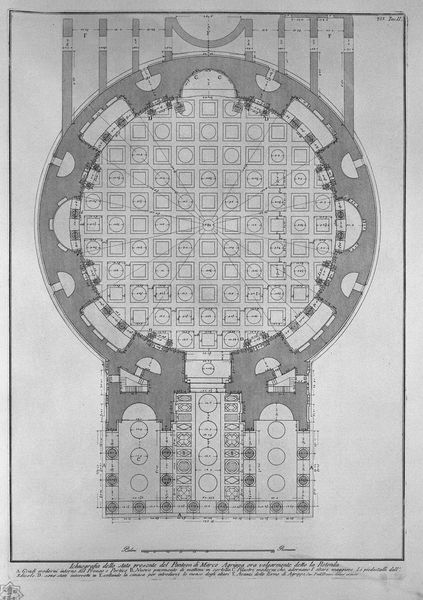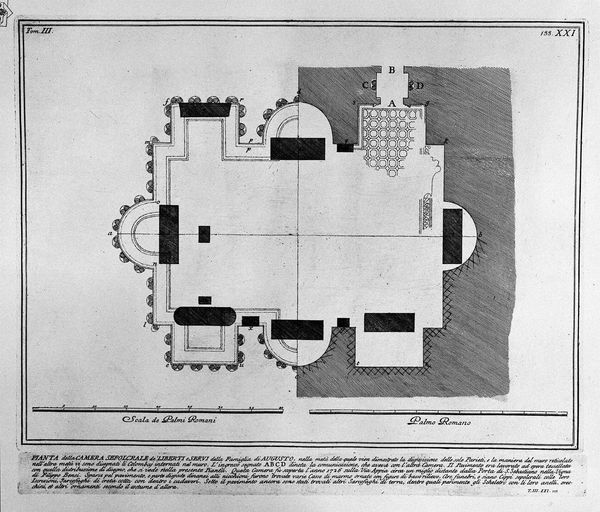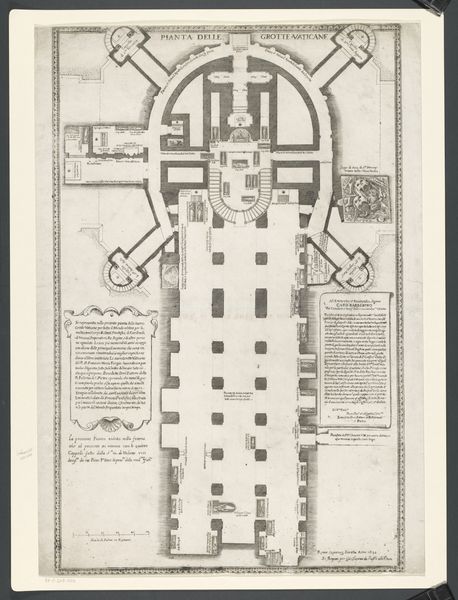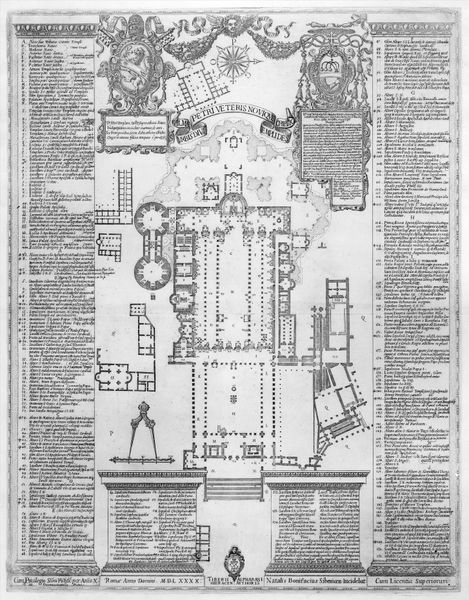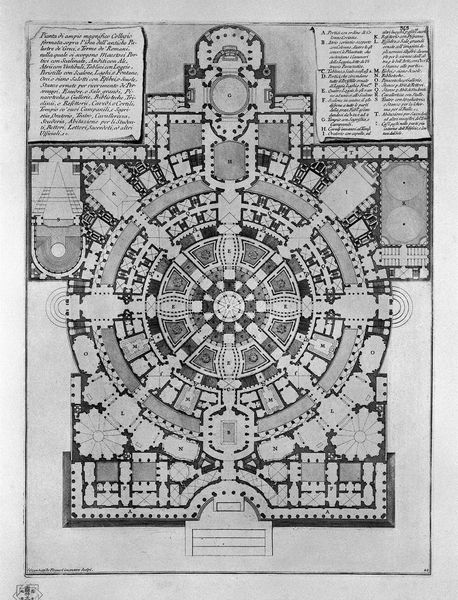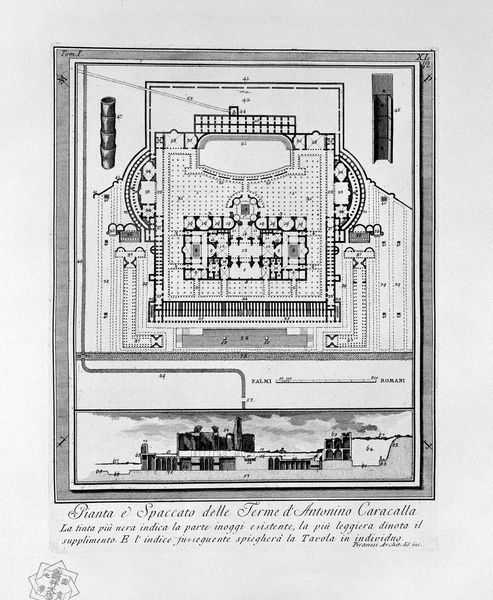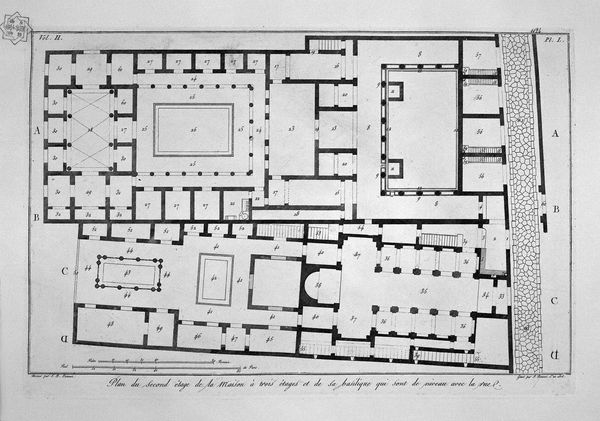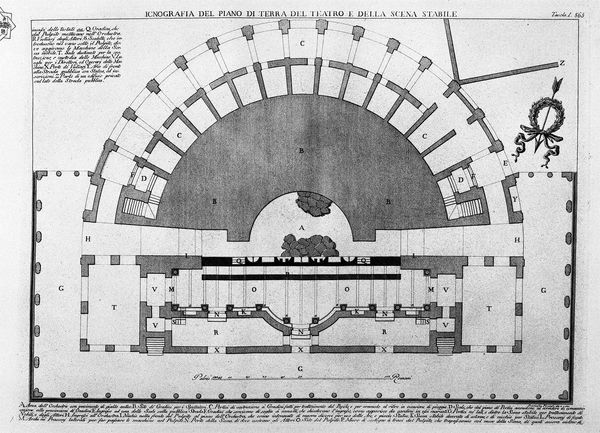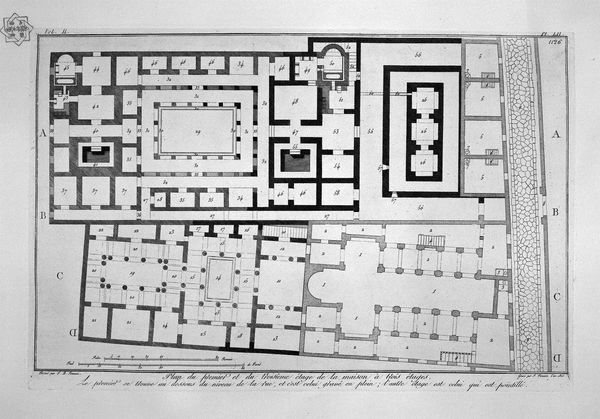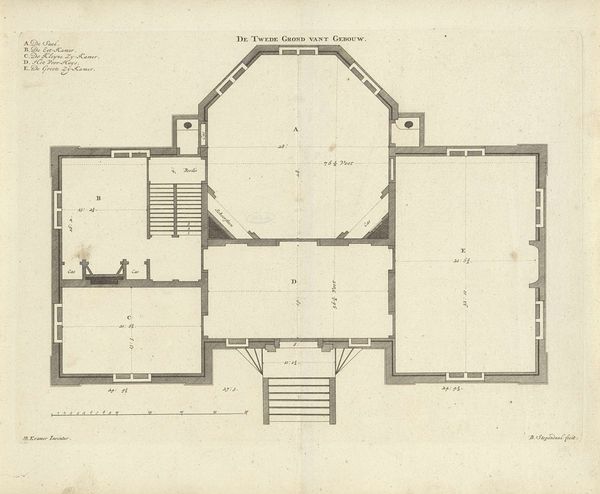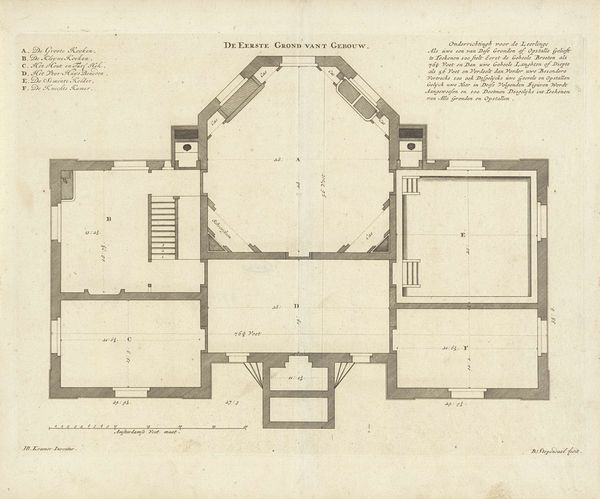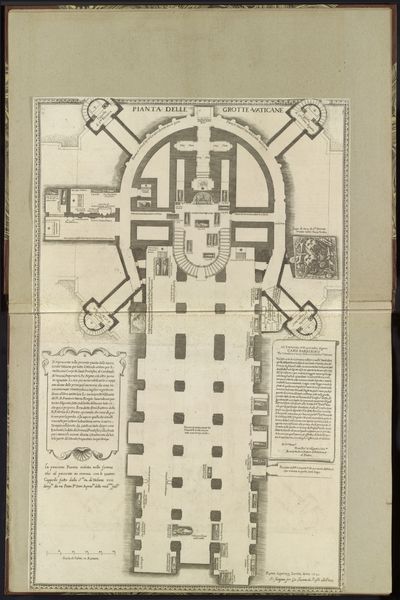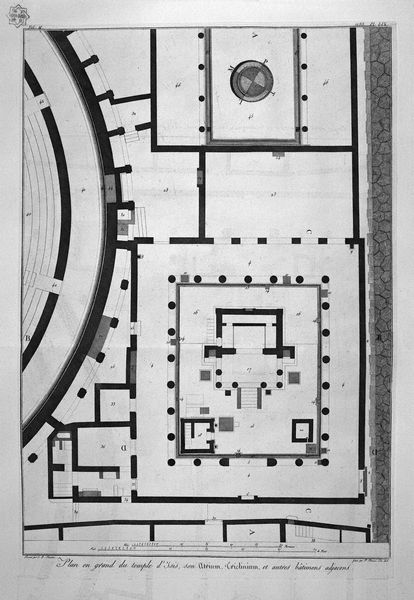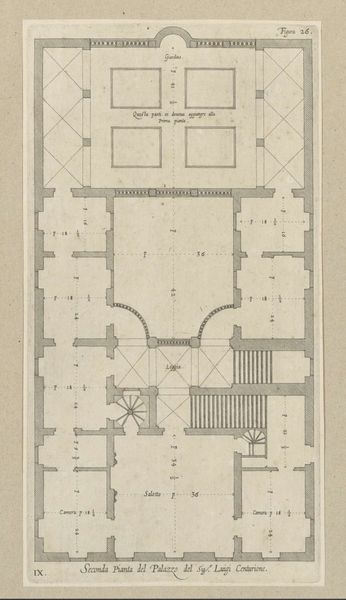
drawing, print, etching, typography, pen, engraving, architecture
#
drawing
#
neoclacissism
# print
#
etching
#
greek-and-roman-art
#
perspective
#
form
#
typography
#
geometric
#
ancient-mediterranean
#
arch
#
stylized text
#
line
#
pen
#
cityscape
#
history-painting
#
engraving
#
architecture
#
calligraphy
Copyright: Public domain
Editor: This is Giovanni Battista Piranesi’s “Iconography of the ancient state of the Pantheon,” made using etching, engraving, and typography. It shows a detailed plan of the Pantheon. The sheer density of lines and geometric shapes is fascinating but also a bit overwhelming. What stands out to you in terms of how it was made and its historical context? Curator: What strikes me is how this print collapses the distinction between artistic representation and technical drawing. Piranesi, through etching and engraving, transforms architectural plans into a commodity, making the Pantheon’s design accessible, even reproducible, for consumption. Editor: Reproducible, yes, but the process of etching and engraving seems incredibly laborious! It makes me wonder about the economics involved. Curator: Precisely! Think about the material resources, the skilled labor, and the printing presses needed to create these images on a scale that made them influential. Piranesi isn't just depicting the Pantheon; he's participating in a network of production and dissemination that shapes how people understand antiquity. How does this interplay between precise depiction and artistic interpretation influence your view of Neoclassicism as a movement? Editor: I always considered Neoclassicism as this very clean, idealized look back to antiquity, focused on aesthetics, but the process shown here reveals a whole other layer – the means and cost of accessing and representing it. Curator: Exactly. It reveals that the 'ideal' is constructed not only through aesthetic choices but also through material practices. This print reminds us to question who had access to the Pantheon, and on what terms. Editor: Looking at the work now, I see the beautiful lines, but I am much more aware of its value as a material object that came to be through so much labor and cost. Curator: Absolutely. It encourages us to look critically at the systems that enable certain representations to achieve prominence while obscuring others.
Comments
No comments
Be the first to comment and join the conversation on the ultimate creative platform.
